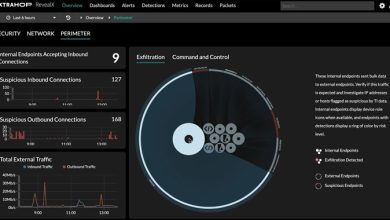Ping Identity Leadership Predicts the 2024 Global Identity Landscape

by Jasie Fon, Regional Vice President of Asia, Ping Identity
 As the digital becomes ever more entwined in our daily lives, identity security has had to swim with the tide amid rapidly evolving threats. This year, technological advancements – particularly in the field of artificial intelligence (AI) – will ensure that the dynamism of the current situation prevails, with identity continuing to be a critical focal point for cybersecurity and resilience.
As the digital becomes ever more entwined in our daily lives, identity security has had to swim with the tide amid rapidly evolving threats. This year, technological advancements – particularly in the field of artificial intelligence (AI) – will ensure that the dynamism of the current situation prevails, with identity continuing to be a critical focal point for cybersecurity and resilience.
Indeed, concepts like zero trust – where the priority is to ‘never trust, always verify’ – are now fully mainstream, as the Singapore Government’s Zero Trust Architecture (GovZTA) demonstrates. At the same time, decentralised identity, threat protection, and passwordless authentication remain high on the agenda for organisations to protect identities and stay digitally secure.
Securing Identities Are Essential In a Distributed World
With the cyber world increasingly distributed and embedded in our daily lives, the ensuing arms race between cyber criminals and the rest of us is one of the incredibly high stakes – with identity as its central battlefield.
Traditionally serving as a guardian of authenticity and security, identity is now a bulwark for everything and everyone, emerging as the “new perimeter”. Meanwhile, the push to centralise identity management by organisations has led to fraudsters adapting by targeting identity systems and controls at every stage of the identity lifecycle, from new account registration to authentication.
The onus now is on organisations to increase commitments to safeguarding their identity infrastructure. This is the era of robust verification, where “authenticated” replaces “authentic” as the new standard, with AI, of course, playing a leading role for both sides in driving this imperative.
Demand for Secure Simplicity To Give Passwordless Greater Prominence
In a recent advisory, the Monetary Authority of Singapore (MAS) urged financial organisations to strengthen MFA with passwordless identity verification. The central bank cited mobile malware and Generative AI among key risks that were actively jeopardising identity security.
This just highlights the changing consensus, with traditional credentials on the way out, to be replaced by passwordless authentication as the new norm. Sure enough, a study we conducted last year found that 59% of consumers were still memorising passwords, while 54% said they were struggling to keep track of their passwords. But that’s not all; 60% have stopped using an online service because they became frustrated with the login process, while 65% said they would switch to a competitor for passwordless authentication.
AI’s Momentum To Continue
No matter the industry, AI has caused a stir. However with its growing popularity among professional users, these technologies must be managed by high-level IT officers.
That is because the unprecedented adoption of these tools has added to IT complexity. Thus far, chief information officers (CIOs) have played an important role in early implementation, but as AI develops, CIOs will need to collaborate with chief information security officers (CISOs), chief human resources officers (CHROs), and legal teams to maintain secure and ethical use.
There is also great potential for the emergence of new C-suite roles, like a chief AI Officer, who ensures AI adoption continues to grow in line with emerging regulations.
Risk Will Drive New Innovations
There is a symbiotic relationship between threat actors and the rest of society. Both will push each other to evolve in a bid to outdo the other. In turn, such creative pressure will likely lead to fascinating new identity solutions and products.
For instance, the challenges posed by increased fraudulent activity could drive innovation in content verification and validation technologies. Meanwhile, threat actors’ continual innovation to breach security could push security teams to match pace through innovation. Simply put, staying ahead of the fraud curve hinges on constant evolution, so expect organisations to expand partnerships and collaboration to provide cutting-edge technology solutions for emerging challenges.
Deep Fake Technology to Penetrate Every Level of Society
The recent Taylor Swift deep fake controversy was just the latest in a slew of highly visible incidents leveraging this tactic. And with AI technology now able to impersonate human beings in ways previously unimaginable, expect our trust to be challenged in ways we never imagined. Those who are less digitally savvy will be especially vulnerable.
As the likenesses of our loved ones and people in authority become harder to verify, dealing with these threats will become a daily struggle. We must all be vigilant to these advanced scams and challenge our normal level of trust. Always double-check sources and help raise awareness by calling out scams publicly.
From the continued adoption of new digital tools to an increasingly dispersed workforce, it would seem like there is a near-endless amount of attack surfaces for cybercriminals to target. But in spite of the uncertainties, governments, businesses, and individuals can all minimise risks by being proactive and weaning themselves off outdated modes of protection.




